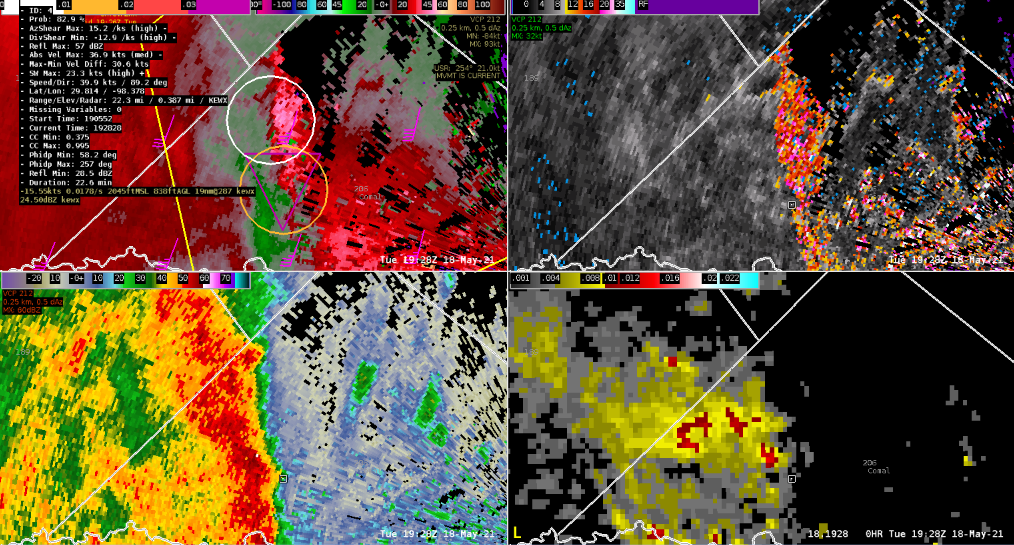Today’s case at EWX presented numerous challenges in a mixed case multicellular/linear convective environment. While closely monitoring for any potential local surges along an eastward surging line segment (already covered with a SVR/TOR POSSIBLE at the time), it was observed several NMDA and NTDA algorithms were lightning up along the front edge of the line.
At this time, I was closely monitoring for any local surges given 0-3km Bulk Shear reached 30-35kts, but the UDCZ (Updraft/Downdraft Convergence Zone) was not line-normal to the shear orientation, meaning it would take a local surge to possibly spin up requiring a proactive tornado warning decision.
This line segment was just west of the EWX RDA at the time, which presented some challenges along the leading edge of the line with ground clutter in an area of low power return causing erroneous velocity (as noted in very high SW).
This was an example of where applying situational awareness to each algorithm is necessary, and false signals can and will appear. This is where the trained eye comes in to further investigate using additional products/scans to gain confidence at what exactly is going on.

– Dusty Davis
